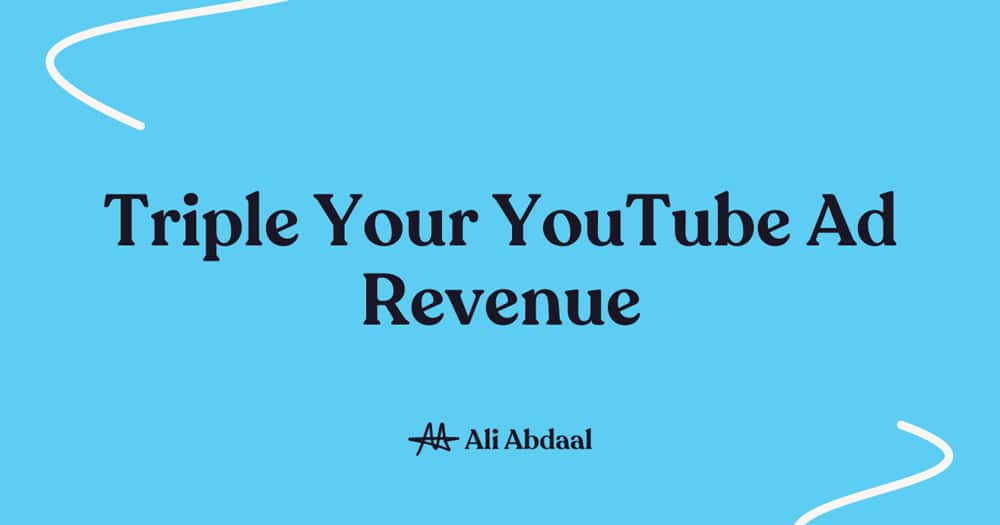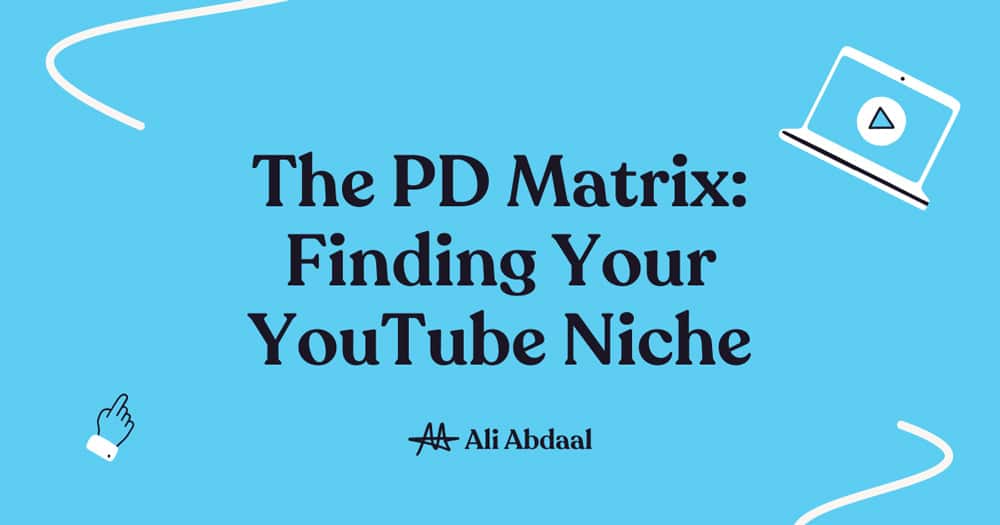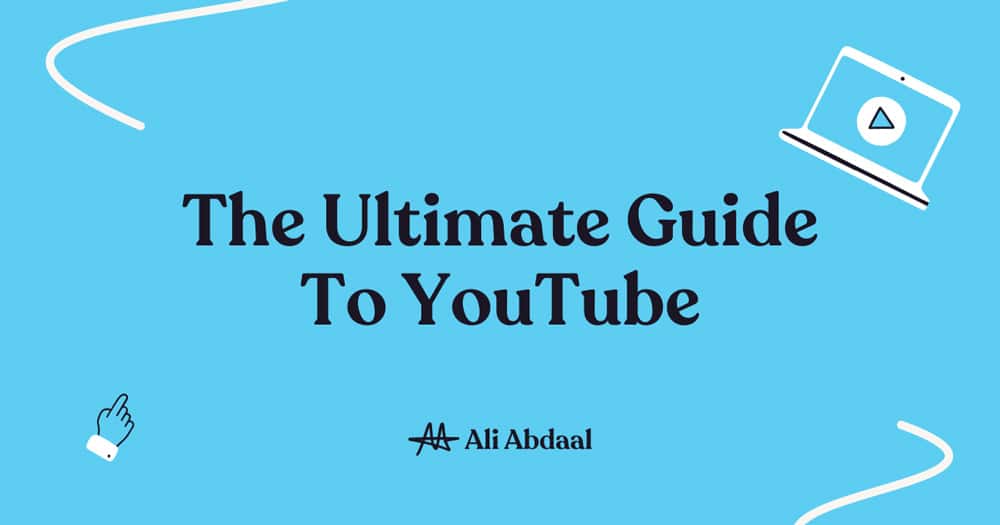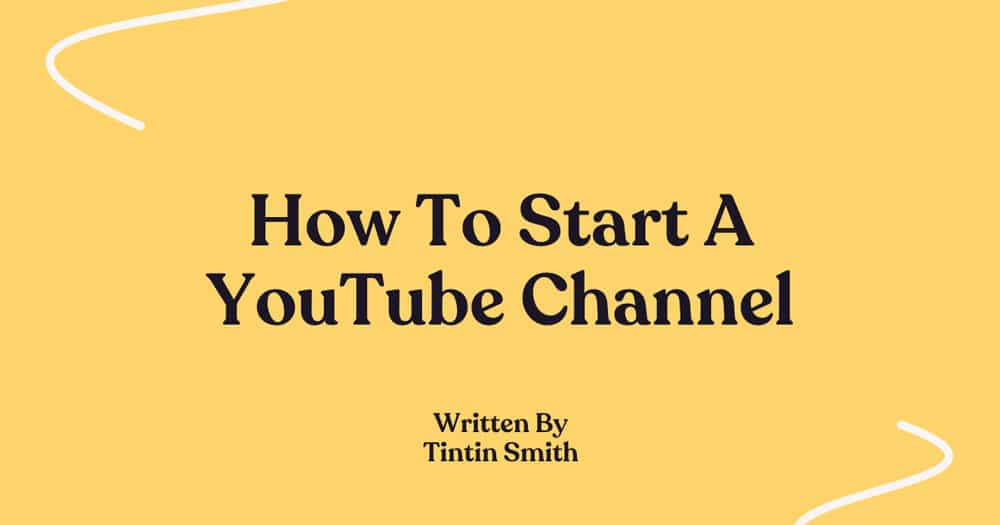One of the many great reasons to start a YouTube channel is to make some money. And perhaps the easiest way for us to do this is to begin displaying ads on our videos (through the Adsense programme). This article explores how you can triple your YouTube Ad Revenue.
But how we actually increase the amount of money we make through Adsense isn’t entirely straightforward.
People often think that more views correlates with more money or more subscribers means a higher revenue – but it doesn’t really work like that. It’s not quite so simple.
Although there are many smaller factors that affect the amount of money we make through ads (as we’ll talk about later), I’ve found there are 3 key factors that are most influential:
- 👀 Watch Time
- ⌛️ Length of Video
- 🎬 Type of Content
How to Begin Showing Ads
Before we get to these factors though, we need to make sure we’ve been accepted on to the YouTube Partner Program (YPP). This requires us to have at least 1000 subscribers and 4000 public watch hours in the last 12 months.
Only once we’ve met these requirements can we begin showing ads on our videos. And these ads typically fall into one of the following 4 categories:
- Skippable ads (in-stream) – these are the ads that play before a video (pre-roll) or during the video (mid-roll), and can be skipped after 5 seconds. Google also calls them TrueView in-stream ads as we’ll only be paid when someone chooses to watch the full 30 seconds. As viewing them is optional, we typically get paid more for these type of ads.
- Non-skippable ads (in-stream) – 76% of people will choose to skip ads, so some advertisers run in-stream ads that can’t be skipped by the viewer. These ads are normally 30 seconds long, but advertisers also have the option to run shorter ads (such as 6 second bumper ads).
- Video discovery ads – formerly known as in-display ads, these ads sit at the top of the result page whenever we search for something on YouTube (kinda like the ads we see at the top of the Google search page). Again, these are also a type of TrueView ad as the user actively decides whether or not to watch them.Non-video ads – finally, these are the image-based ads we see floating above our videos (overlay ads) or in the right sidebar next to our video (display ads). Unlike in-stream ads, we’ll be paid on a cost-per-click basis, which means that we’ll get a few pennies every time someone decides to click on the ad.

The 3 Factors that Affect Ad Revenue
👀 1) Watch Time
When it comes to making money from our video content, watch time is perhaps the single most important factor. On a very basic level, the longer people watch our videos, the more opportunity they have to see our in-stream ads, which should lead to higher revenues. Pretty simple really.
From an algorithm perspective, watch time is also a fantastic indicator of video quality. If YouTube thinks our videos are decent and keeps viewers on the platform for longer (which is what they’re ultimately trying to achieve), then they’re going to surface our videos more often. Plus, they’ll be far more likely to show ads on our videos as our content is likely to result in more views and clicks for the advertiser.
Given that watch time is so important, we need to pay particular attention to our audience retention graphs. The aim being to try and keep our audience engaged for as long as possible. This is harder than you may think:

If we look at four of my earlier videos, we can see the audience retention graphs are not too impressive, and by the end of the video only 1 in 4 people are watching.
I’ve been slowly working on trying to move my retention percentage closer to 50% (ish), and sometimes I just think “ughh this is completely pointless”. But, having seen the awesome results I’ve had from improving retention and watch time in other videos, I think it’s well worth putting in the work to sort it out.
Just check out the ad revenue of these 2 videos and the impact I’ve had simply by increasing my watch time:

⌛️ 2) Video Length
For many years, YouTube’s policy allowed creators to have mid-roll ads on any video longer than 10 minutes.
As a result, some channels began to artificially inflate the length of their videos to get past the ’10 minute mark’. And although there’s a trade off between putting more ads in videos and retaining audience attention, it had a net positive result and significantly increased their earnings.
In fact, my YouTube friend, Shelby Church, actually ran an experiment to see the difference in ad revenue between a video under 10 minutes compared to a longer video over 10 minutes. She found that a video over 10 minutes earned her 3 times more ad revenue than the shorter video.
Recently, YouTube changed this policy to allow all videos over 8 minutes to add mid-rolls ads. This is awesome news for creators because it makes showing ads on our content even easier, but we’re still likely to see people inflating their video length to reach the ‘8 minute mark’ lol.
Video Length Example – My Last Day as a Doctor
This video’s length (33:12) is the primary reason it generated such substantial revenue in the first couple of months. And it quickly became the eighth most financially lucrative video that I’ve ever released – outperforming videos with well over 1 million views.


🎬 3) Type of Content
Finally, the type of content we create is the third key factor impacting our ad revenue. This is mainly because of the effect it has on our videos’ CPM (cost per mille).
In advertising, CPM refers to the cost per 1000 impressions and, for YouTube, this means views. So, let’s say we had a CPM of $10/£10, then the advertiser will pay that much money per 1000 ad views on our video and we’ll take a cut of it. If our CPM was higher, we’d obviously make even more money.
Our CPM rates ultimately depend on the type of videos we make. You see, advertisers have to bid for advertising slots on YouTube and the amount they pay is determined by the level of competition from other advertisers wishing to show their ads on the same videos – effectively, it’s an auction with the highest bidders getting the best video spots. As a result, advertisers pay different rates for different topics on different channels.
Channels with videos on subjects like e-commerce, real estate, finance, technology or videos about making money all seem to produce higher CPMs than content such as vlogs, because there is more competition from advertisers to purchase those ad slots and access the audience of those particular videos. So it’s totally worth being selective with your niche and producing content that’s advertiser-friendly if you want to make a decent CPM.
On average, how much can we expect to make?
Most channels average between £2-5 ($3-7) per 1000 views – for instance, my videos only get a little above this ($4-10). But the most profitable topics will earn creators around £30 ($40) per 1000 views. In fact, Shelby Church’s video on how to make money using the Amazon FBA program had an incredible CPM of $35.60. This was a prime video for advertisers to target because it’s a video about e-commerce, technology and making money online – all of which are topics that tend to drive up advertising prices.
Sadly, not all the CPM goes to the creator. YouTube takes a 45% cut of the CPM which means if our CPM was $10, we’d actually only get $5.50. This new value is known as the RPM (Revenue per Mille) and provides a more accurate idea of how much money we’ll make from our videos.
If we want to see how much we’re earning from ads, we can find both our CPM and RPM earnings in the YouTube Creator Studio. Here’s what mine look like:

Example – How I Take Notes on my iPad Pro
This video has a revenue which amounts to 3x more than any other video on my channel. It has the highest CPM, the highest Watch Time and is well over 10 minutes in length – if anything it’s the perfect combination for a high revenue video.

Additional Factors
The above 3 factors have the biggest influence on the amount of money we’re going to make through our YouTube ads. But, they’re not the only factors. There are also some smaller, additional, factors that affect the amount of money we’re likely to make:
- 📈 Algorithm – although nobody really understands how this works, if we can create content that favours the YouTube algorithm we’ll increase our chances of getting views and recommendations of our content. And subsequently increase our ad revenue. Check out this YouTube Analytics & Growth Masterclass if you’re interested in learning more about this.
- 🙌 Demand – if more advertisers see that our audience is engaged and within their niche, then there’s going to be more of them bidding for an ad spot on our channel. This bidding drives up the price they pay and, therefore, the amount of money we make. If demand is low, because our content hasn’t got any particular focus, then less advertisers will bid. So we’ll make less money.
- ⛄️ Season – certain topics are more popular at different times of year. For instance, around Christmas time advertisers are more likely to run ads. This is why we usually see our CPM increase in December as advertisers compete for the best ad spots.
- 🕵️♂️ SEO – if we can improve our position in the YouTube search results, we’re going to get more views and better ads shown on our content, which means more money. I’ve found that it can be useful to do some basic SEO, such as targeting keywords (I use Ahrefs for this) and filling out the relevant meta information when uploading my videos.
- 🌎 Geography – certain countries (e.g. the USA) have populations with far greater spending power compared to others (e.g. India). So, if our audience is mostly from the USA, advertisers are going to bid more to show ads on our content (as our viewers are more likely to buy their products or services).
- 🛑 Ad-blockers – finally, some people use ad-blockers to stop seeing ads on YouTube. Obviously, if more people have ad-blockers, less people will see the ads running on our content. And we’ll make less money.
This sounds like a lot, but I’ve noticed that these additional factors are largely just about increasing watch time (i.e. algorithm, season, SEO) and creating the right content (i.e. demand & geography) – two of the three key factors we talked about earlier. So, if anyone’s keen to increase their ad revenue, then there isn’t much point worrying about these additional factors at all. Just focus on finding our niche, building our audience, and keeping them engaged.
Other than that, it’s important to remember that ads aren’t the only way we can make money through YouTube. Things like sponsorships, affiliate income, and running an online course are all great ways to increase our earnings too. In fact, these additional income streams accounted for 90% of the money I made in 2020 (about £900,000), which is insane.
Conclusion
There’s no simple way to increase our ad revenue. Many different factors impact the amount of money we’re likely to make. But it largely comes down to increasing watch time, creating longer videos, and being selective with our content type.
If there’s one piece of advice I would give it’s to keep everything as simple as possible. Don’t overcomplicate things. If we focus on the process, making small improvements to our channel where we can, then we’re going to head in the right direction and gradually earn more from our ads. Hopefully you found this useful. If you’re interested in learning more about how to maximise your earnings from AdSense, sponsored videos, affiliate partnerships and your own products, without annoying your audience, then feel free to check out my course, The Part-Time YouTuber Academy.




